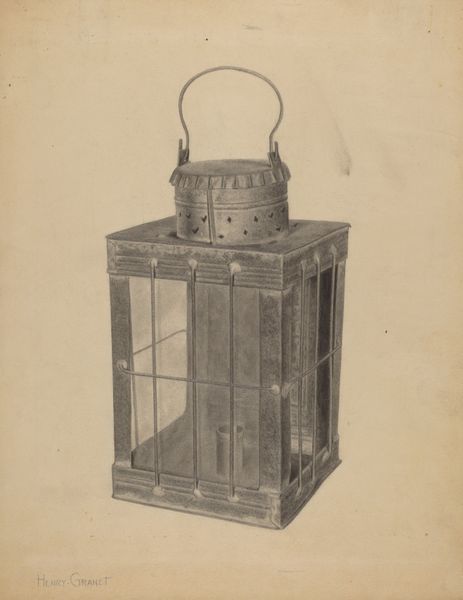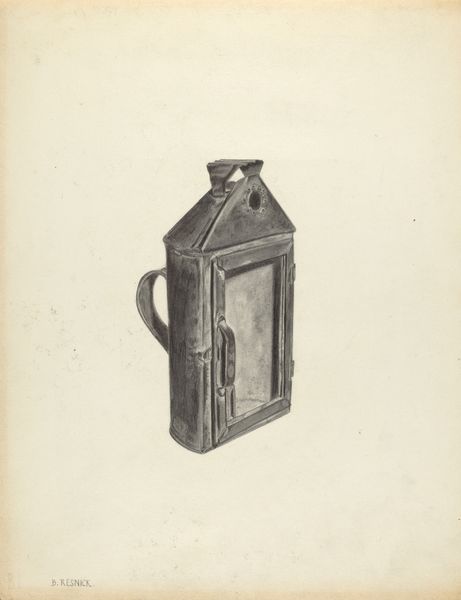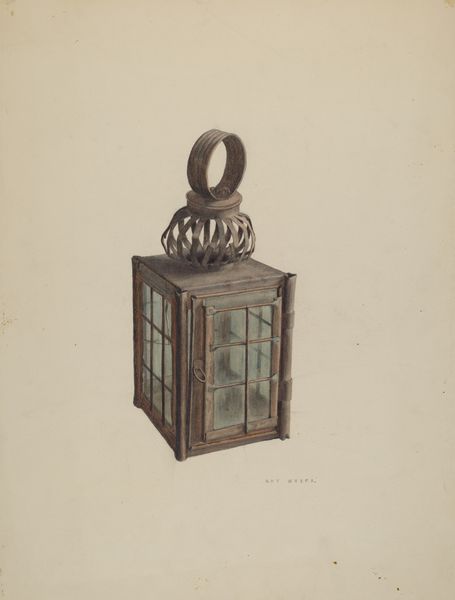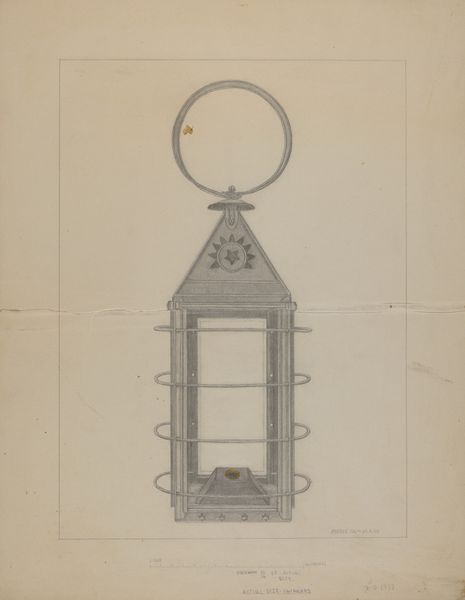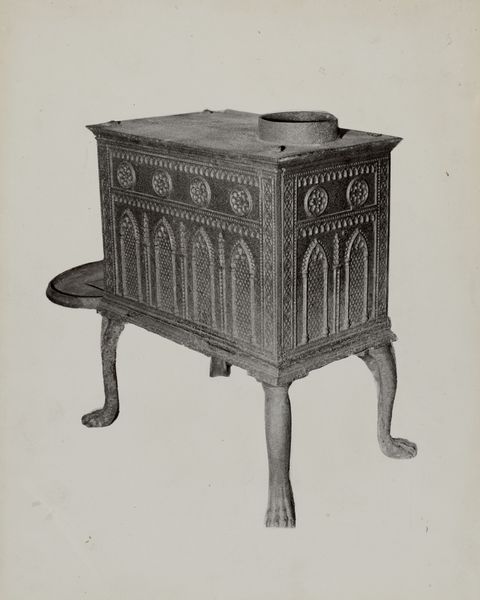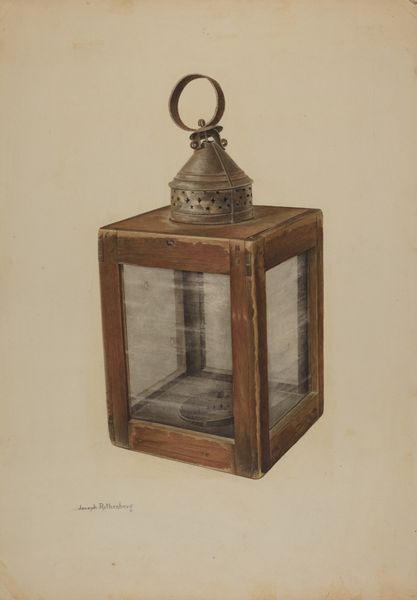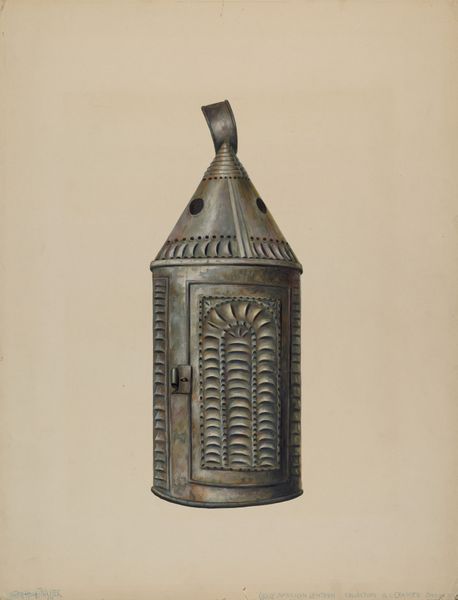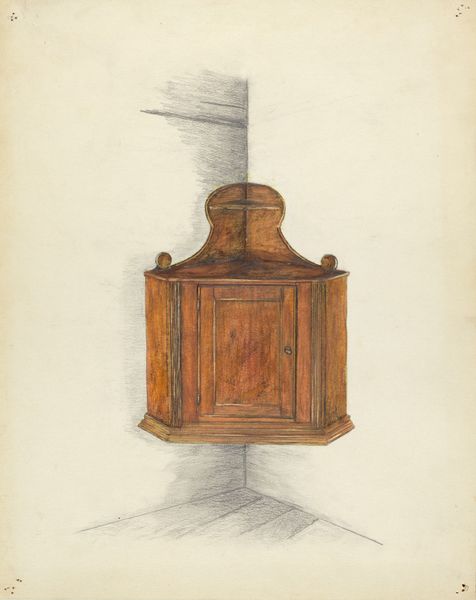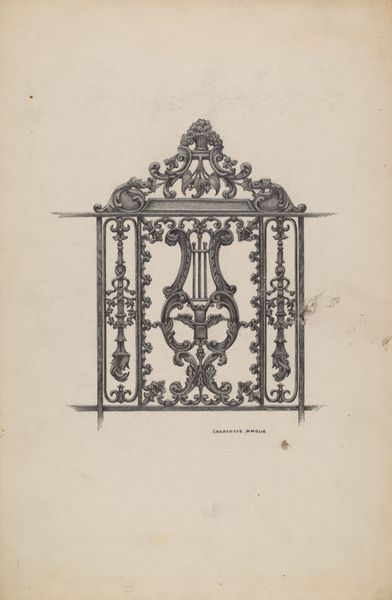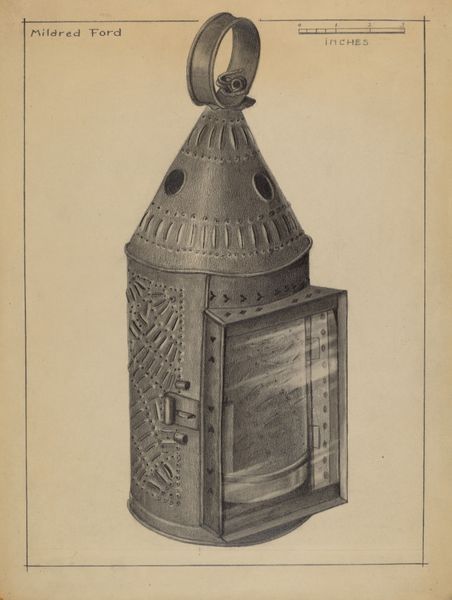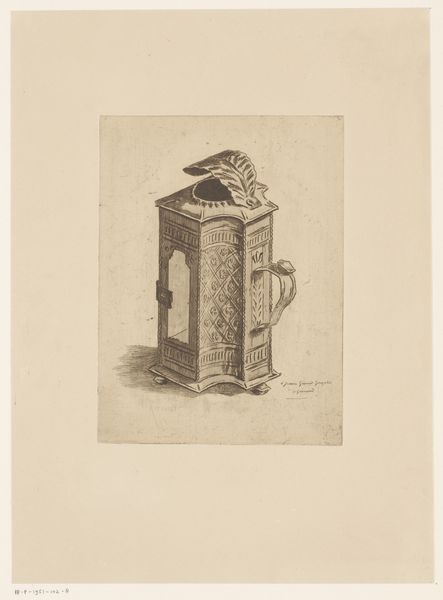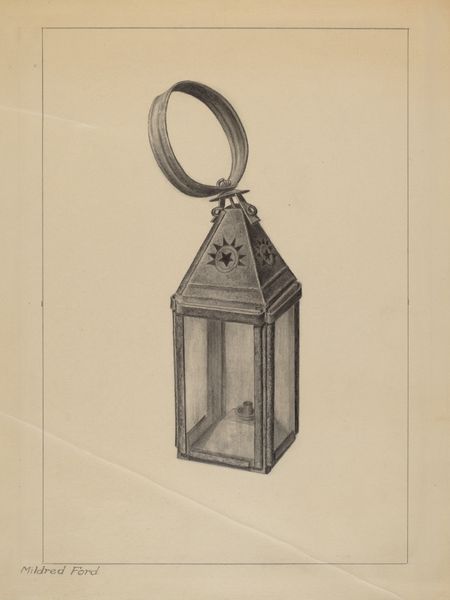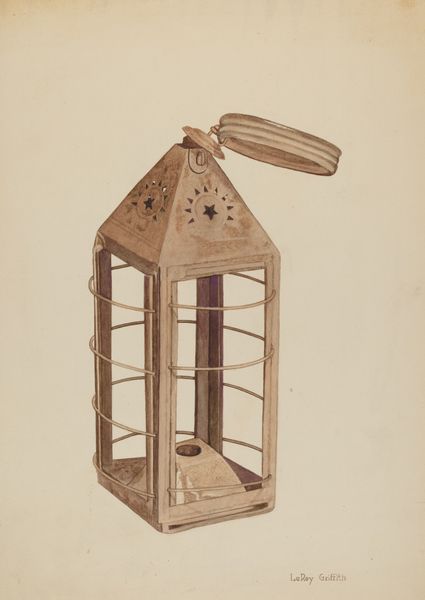
drawing, paper, pencil
#
drawing
#
paper
#
pencil drawing
#
pencil
#
realism
Dimensions: overall: 35.6 x 27.9 cm (14 x 11 in.)
Copyright: National Gallery of Art: CC0 1.0
Curator: Here we have William Schmidt's "Lantern," a pencil drawing on paper created sometime between 1935 and 1942. Editor: My initial thought is the mood; it evokes such quietude, almost stillness. It's as if the world holds its breath, awaiting a spark. Curator: Schmidt's delicate handling of light and shadow certainly enhances that atmosphere. Note how he uses varied pencil strokes to suggest the metallic texture of the lantern and the soft glow emanating from within. It exemplifies Realism. Editor: Yes, and those muted tones are deeply telling. Think about the historical backdrop: the looming shadow of World War II. This small, humble light takes on greater significance. It represents resilience, perhaps hope during a dark chapter, reflecting a community holding onto small comforts amid uncertainty. The materiality evokes metal shortages of the time period. Curator: It is interesting how the artist captured such nuanced three-dimensionality solely with pencil. We observe an interesting formal symmetry in the lantern itself. The artist uses a balanced composition with a central focus. The vertical lines of the lantern's frame are countered by the horizontal planes of its top. Editor: Agreed, the object’s geometrical balance creates an image that stills the viewer. It offers a sense of solace or even longing for what seems so long ago now, but given that the lantern illuminates very little, it makes one think of marginalized populations, as they navigate spaces—sometimes dangerously—without adequate societal resources. Curator: What strikes me about the image as a whole is that while its simplicity is quite compelling, there's no sense of depth. Our eye keeps returning to the central image without being distracted by peripheral details. Editor: I find that simplicity powerful, underscoring the everyday object, its ability to carry loaded symbols and represent powerful intersectional metaphors if we examine its historical context. Curator: This detailed observation of an everyday object encourages us to appreciate how technical artistic ability can produce a potent image. Editor: Indeed, inviting us to find complex meanings in quiet corners and to honor all histories that come to light.
Comments
No comments
Be the first to comment and join the conversation on the ultimate creative platform.
